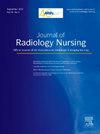The Times They Are Still A-Changin’: Examining Changes in Radiology Education Online Audiences 8 Years Apart
Q3 Nursing
引用次数: 0
Abstract
Background
Launched in 1999 to provide radiology education, CTisus.com now reaches millions.
Purpose
We compare user metrics between nonconsecutive years to understand audience changes and optimize content.
Materials and Methods
Using Google Analytics to track website traffic, we chose 2022 (latest calendar year of audience data) and 2016 (first calendar year with data) to compare age, gender, location, language, and technology use.
Results
The most common user age groups were 25 to 34 (34.87%), 35 to 44 (22.37%), and 45 to 54 (13.69%) in 2016 and 25 to 34 (28.31%), 35 to 44 (22.00%), and 18 to 24 (20.11%) in 2022. Gender distribution changes were nominal. CTisus visitors hailed mainly from the United States (44.11%), India (4.90%), United Kingdom (3.73%), Canada (2.85%), and Australia (2.69%) in 2016; the United States (34.80%), India (8.12%), United Kingdom (3.56%), Saudi Arabia (2.39%), and Australia (2.31%) in 2022. The most common languages were English (73.32%), Spanish (5.51%), and Portuguese (2.92%) in 2016; English (71.29%), Spanish (4.62%), and Chinese (2.34%) in 2022. In 2016, 76.57% of visitors used desktops, 17.06% mobile devices, and 6.36% tablets; in 2022, 50.48%, 47.61%, and 1.91%, respectively.
Conclusion
Radiology educators can best reach their audience by creating and sharing content that will specifically engage their audiences, which skew younger. One way is to translate content into multiple languages. Content must also be available on mobile devices to maximize audience reach. Understanding changes in the audience for radiology education can help radiology educators create better content for the radiologists, nurses, radiologic technologists, fellows, residents, students, and others who are looking to find radiology education and content online.
他们仍在变化的时代:相隔8年的放射学教育在线受众的变化
CTisus.com成立于1999年,旨在提供放射学教育,目前已有数百万用户。目的:我们比较非连续年份的用户指标,以了解受众的变化并优化内容。材料和方法使用谷歌Analytics来跟踪网站流量,我们选择了2022年(最新日历年的受众数据)和2016年(第一个日历年的数据)来比较年龄、性别、地点、语言和技术使用。结果2016年最常见的用户年龄为25 ~ 34岁(34.87%)、35 ~ 44岁(22.37%)、45 ~ 54岁(13.69%),2022年为25 ~ 34岁(28.31%)、35 ~ 44岁(22.00%)、18 ~ 24岁(20.11%)。性别分布的变化是名义上的。2016年,ctius的游客主要来自美国(44.11%)、印度(4.90%)、英国(3.73%)、加拿大(2.85%)和澳大利亚(2.69%);2022年,美国(34.80%)、印度(8.12%)、英国(3.56%)、沙特阿拉伯(2.39%)和澳大利亚(2.31%)。2016年最常见的语言是英语(73.32%)、西班牙语(5.51%)和葡萄牙语(2.92%);到2022年,英语(71.29%)、西班牙语(4.62%)和中文(2.34%)。2016年,76.57%的访问者使用台式机,17.06%使用移动设备,6.36%使用平板电脑;2022年,分别为50.48%、47.61%和1.91%。结论:放射学教育工作者可以通过创建和分享专门吸引他们的受众的内容来最好地接触他们的受众,这些受众倾向于年轻人。一种方法是将内容翻译成多种语言。内容还必须在移动设备上可用,以最大限度地扩大受众范围。了解放射学教育受众的变化可以帮助放射学教育者为放射科医生、护士、放射技术专家、研究员、住院医生、学生和其他希望在网上找到放射学教育和内容的人创造更好的内容。
本文章由计算机程序翻译,如有差异,请以英文原文为准。
求助全文
约1分钟内获得全文
求助全文
来源期刊

Journal of Radiology Nursing
Nursing-Advanced and Specialized Nursing
CiteScore
0.80
自引率
0.00%
发文量
95
审稿时长
57 days
期刊介绍:
The Journal of Radiology Nursing promotes the highest quality patient care in the diagnostic and therapeutic imaging environments. The content is intended to show radiology nurses how to practice with compassion, competence, and commitment, not only to patients but also to the profession of nursing as a whole. The journal goals mirror those of the Association for Radiologic & Imaging Nursing: to provide, promote, maintain , and continuously improve patient care through education, standards, professional growth, and collaboration with other health care provides.
 求助内容:
求助内容: 应助结果提醒方式:
应助结果提醒方式:


